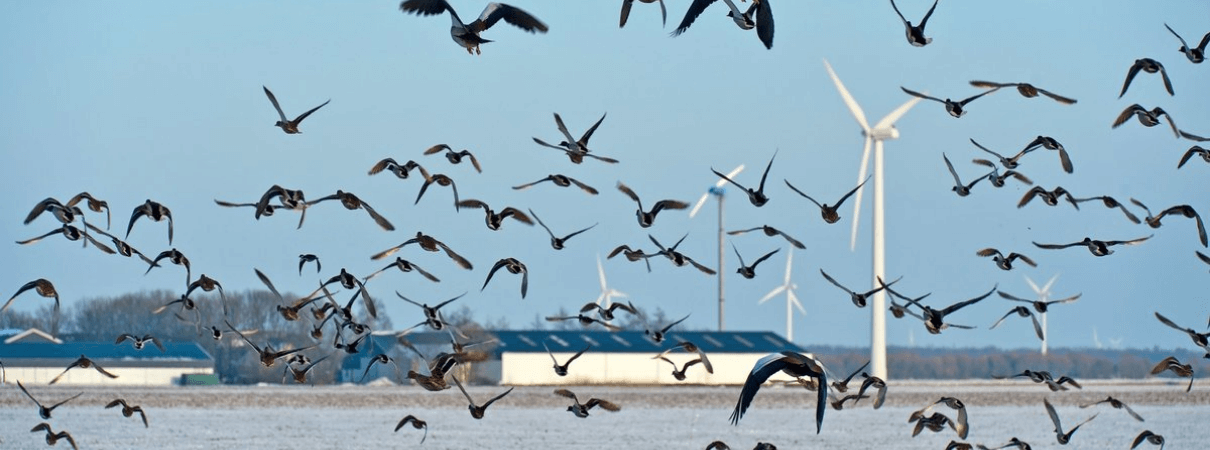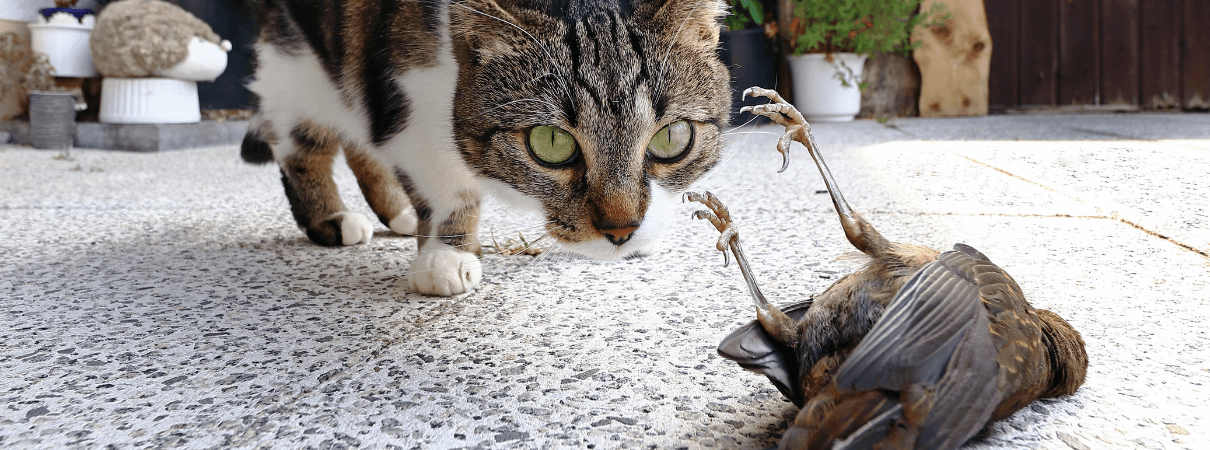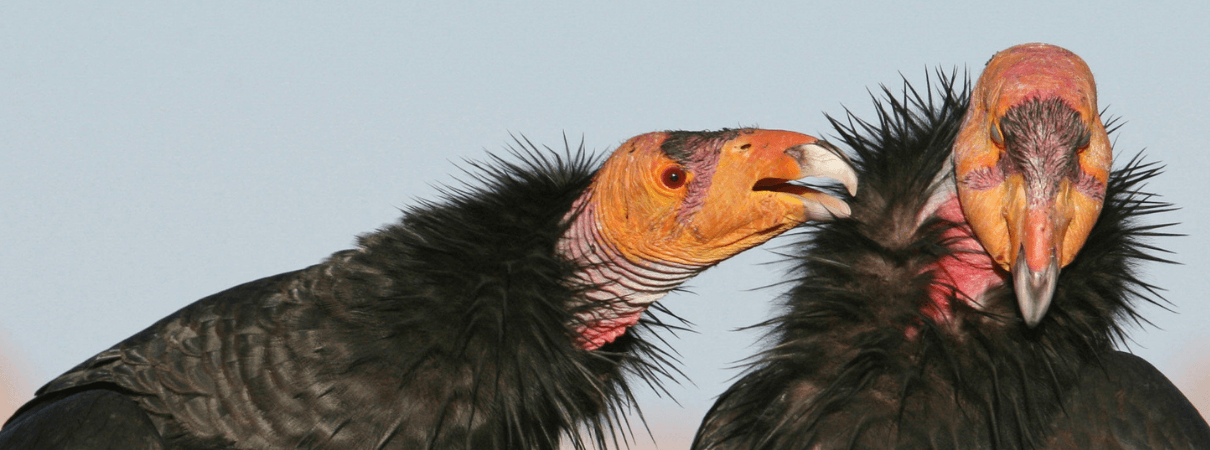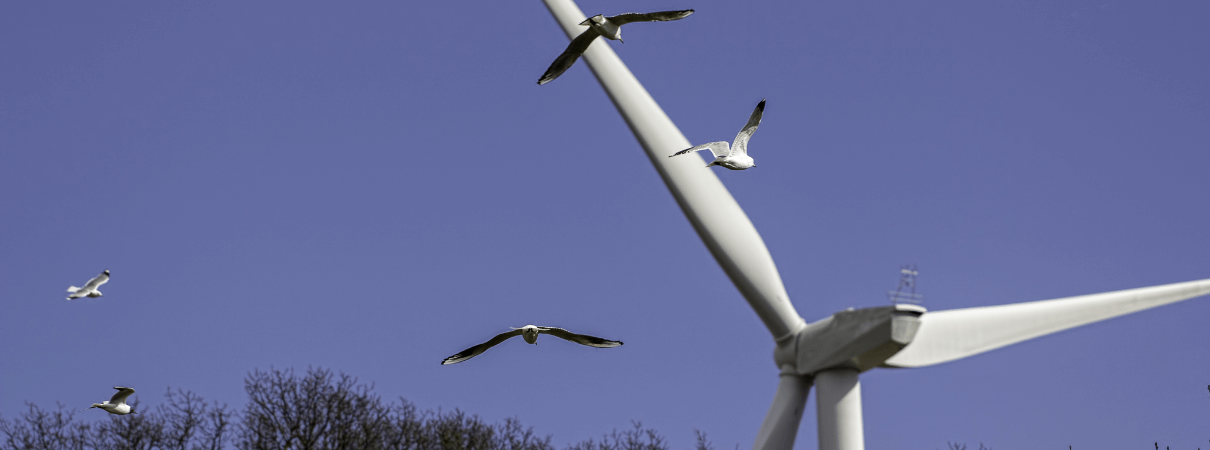Are Wind Turbines a Significant Threat to Birds?
There are many threats to birds … and they are all significant.
Birds face a host of threats — habitat loss, predation by outdoor cats, collisions with windows, pesticide poisoning … the list goes on. Cumulatively, the losses are huge: A recent study by American Bird Conservancy and others showed that there are 2.9 billion fewer birds in the U.S. and Canada than in 1970 — a nearly 30-percent decline of the total population.
Then there's climate change.
Another recent study evaluated the vulnerability of 604 North American bird species to the effects of climate change. Researchers found that 64 percent were vulnerable in some way. To protect birds from the impacts of climate change, we need a rapid, multifaceted approach to reduce greenhouse gas emissions.
That's where renewable energy comes in. Wind and solar energy development are occurring at a rapid pace across the U.S. as part of the broader effort to phase out fossil fuel use.
While this is positive from a climate change mitigation perspective, there is an unfortunate side effect — wind and solar energy infrastructure are threats to birds.

Birds and turbines. Photo by JMarijs/Shutterstock
Yet somehow, whenever the subject of how many birds are killed by wind turbines comes up, it is often remarked that wind turbines kill fewer birds each year than do other threats like outdoor cats and window collisions. The intention here seems to be to make it sound as though wind turbines are not a significant risk to birds.
While it's technically correct that some other threats kill more birds than wind turbines do, this argument is in some ways misleading, and in other ways irrelevant.
To understand why, let's take a look at the numbers.
A Tale of Scale: Cats and Other Threats Versus Wind Turbine Mortality
The argument to downplay wind energy's impact on birds relies on a comparison of total numbers of birds killed each year by outdoor cats, window collisions, and other human-caused threats, citing a seminal publication by Dr. Scott Loss and others.
This work synthesized a series of studies, which the authors themselves conducted, examining annual bird mortality due to a number of threats. When these threats were compared side-by-side, wind turbine mortalities did not top the list.

Cats pose another threat to birds. Photo by Astrid Gast/Shutterstock
While it's important to consider the totals — outdoor cats do kill a staggering number of birds — stopping there ignores the scale of each individual threat.
For example, Dr. Loss's outdoor cat study indicated that there are 30 to 80 million unowned cats in the United States. Compare that to 44,577 — the number of wind turbines on the landscape in 2012, when Dr. Loss's wind turbine study was published. The difference in scale is vast: There were roughly 700 to 1,800 times as many unowned cats as wind turbines at that time.
For another perspective, let's turn the numbers around: How many birds would be killed if there were 30 to 80 million wind turbines? Clearly, this will never happen. But we can't dismiss the impacts that wind turbines have on birds, particularly given the rapid growth of the wind energy industry.
Birds Already at Risk
It is also important to consider that wind turbines do not have the same impact on all birds. Some bird species are more susceptible to collisions with turbines, and some are less capable of sustaining losses than others due to their reproductive ecology.
For example, the Skookumchuck Wind facility in western Washington began operation in 2020, and will kill an estimated 85 federally Threatened Marbled Murrelets over the project's 30-year permit term.
Unfortunately, this isn't the only rare or iconic species threatened by wind energy development.
Researchers found that the population of Golden Eagles at the Altamont Pass Wind Resource Area in California was maintained due to “continental-scale immigration.” In other words, local losses were balanced only by arrival of new eagles from other parts of North America. Wind facilities in southern California are expected to also kill Endangered California Condors.

California Condors. Photo by MTKhaled mahmud/Shutterstock
These species have slow rates of reproduction. Marbled Murrelets and California Condors are particularly slow — each breed only every other year and raise a single chick. Each bird lost is a blow to already vulnerable populations.
There is some overlap in species that are killed by wind turbines, cats, and other threats, but some species that are at risk due to wind energy development are unlikely to encounter any of the others. It would take an ambitious cat, for example, to kill a Golden Eagle.
The Big Picture
At the end of the day, cumulative impacts are what truly matter most. Put another way, wind energy development is but one of many sources of bird mortality, and these are additive.
Which source of mortality kills more or less birds is somewhat irrelevant — birds are being killed by wind turbines and outdoor cats and window collisions, etc. And the threat posed by wind turbines grows with each facility constructed in a high-risk area for birds.

Birds heading towards wind turbine. Photo by Ian Dyball/Shutterstock
Circling back to the studies by Dr. Loss and others, we note that their wind turbine paper stated: “Despite an apparent lower magnitude of bird mortality at wind turbines compared to other anthropogenic mortality sources … mortality at wind facilities should not be dismissed offhand.”
We couldn't agree more.
It's clear that we must act on our shared sense of urgency to reverse the effects of climate change, and that means a rapid shift to clean energy. But we have to do it right. We can't throw caution to the wind when it comes to our vulnerable and declining bird populations.
This is why American Bird Conservancy's Bird-Smart Wind Energy program has been working to promote best practices for wind energy development for more than a decade. We can make the transition to clean energy and minimize impacts to birds.
 | Joel Merriman is American Bird Conservancy's Bird-Smart Wind Energy Campaign Director. |


















































